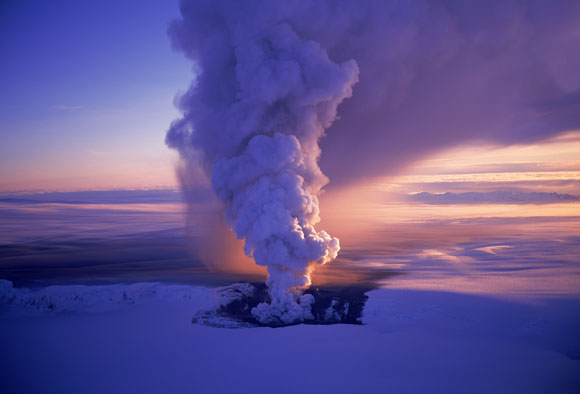Glacier retreat linked to increase in volcanic activity |
 |
Smoke from a subglacial volcanic eruption rises above the Vatnajökull ice cap (photo by Oddur Sigurdsson) |
Researchers have discovered that the retreat of Iceland’s largest ice cap will cause local volcanoes to erupt much more frequently. |
| The Vatnajökull ice cap, the largest in Iceland, has been shrinking for the past century, losing 10 percent of its mass during that time. Several active volcanoes lie beneath its ice. A recent study shows that the reduction in the weight of the ice has reduced the pressure on the earth’s surface. As a result, the ground has risen, permitting magma to flow upward in substantial amounts. The study’s authors predicted that as more magma accumulates, volcanic eruptions will occur more often – about every 30 years. For comparison, 58 years passed between the last two Vatnajökull eruptions. Other areas that could also face more volcanic activity because this link between glacier retreat and magma flow include Mt. Erebus in Antarctica, the Aleutian Islands in Alaska, and the volcanic zone of southern Patagonia. |
Pagli Carolina., and Sigmundsson, Freysteinn. (2008) Will present day glacier retreat increase volcaninc activity? Stress induced by recent glacier retreat and its effect on magmatism at the Vatnajökull ice cap, Iceland, Geophys. Res. Lett., 35, L09304, doi:10.1029/2008GL033510 |